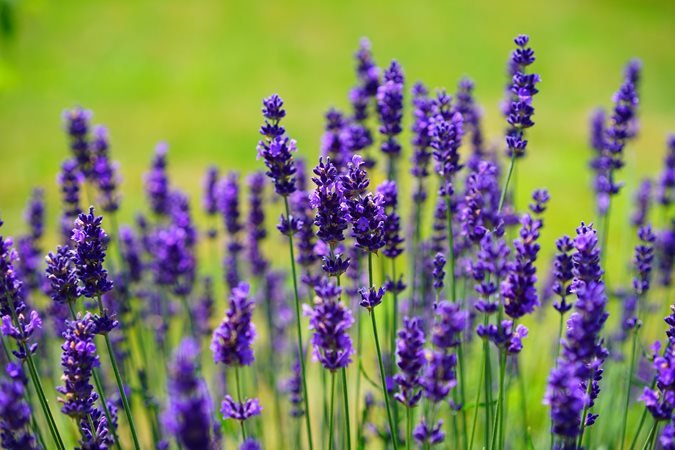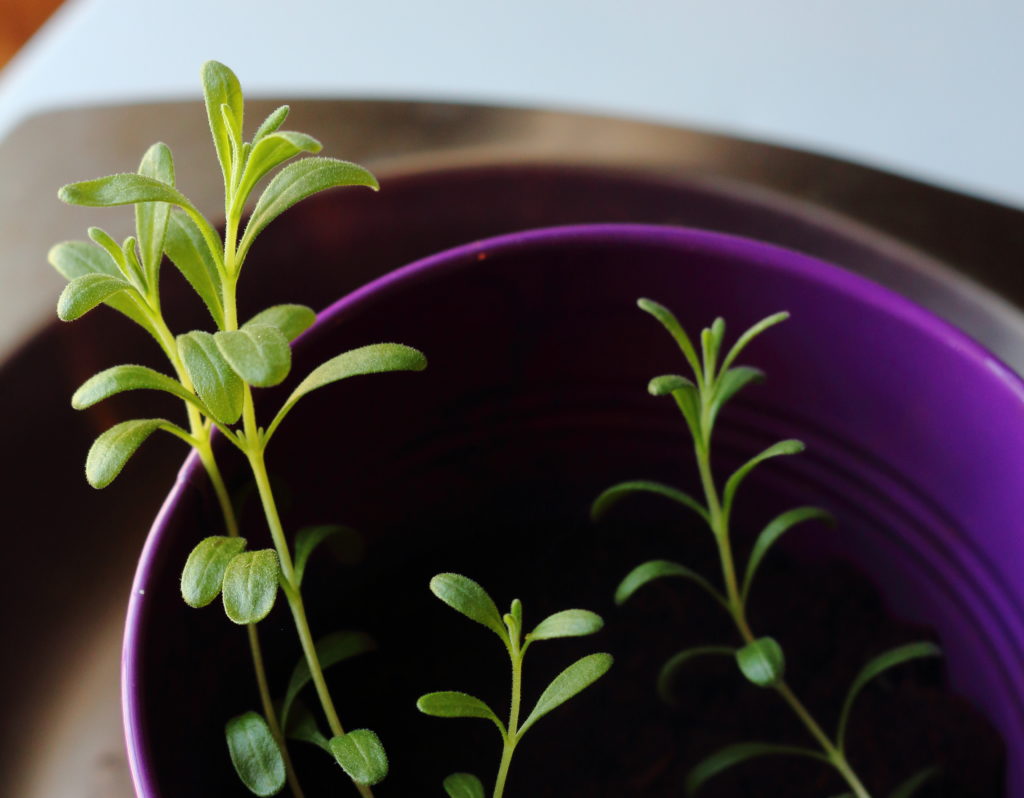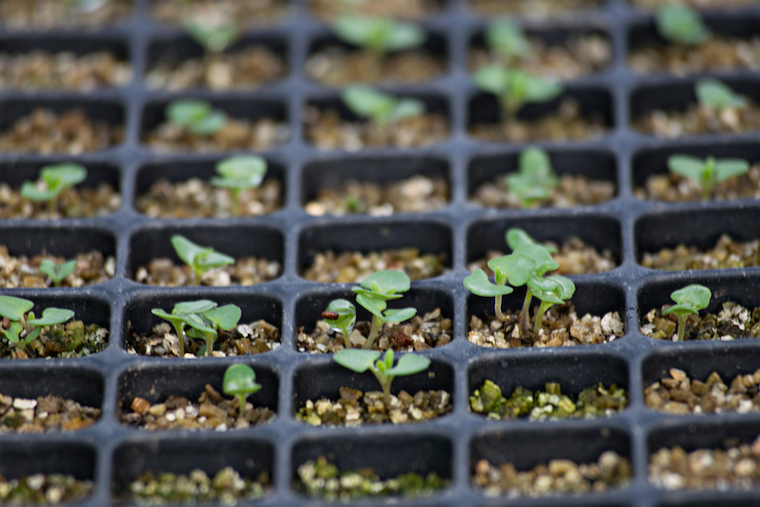Lack of sunlight, planting lavenders in the incorrect soil, or cultivating a lavender species that is not cold hardy in a cool region are the usual causes of lavenders failing to thrive. Lavenders need full light and nutrient-poor, alkaline, sandy, well-draining soils in order to thrive effectively.

Slow-draining soils, acidic soils, excessive watering, the use of fertilizer or nutrient-rich soil, and failing to space lavender plants sufficiently apart are additional prevalent issues.
Replicating some of the circumstances of the lavender plants’ natural home range in the Mediterranean region of Europe is essential to ensuring that they grow well and live for many years.
Full sun, alkaline, sandy soils, low to medium nitrogen levels, and infrequent watering are all favorable conditions for lavender growth.
Learn why your lavender isn’t growing and what you can do to fix the issue by reading on.
Table of Contents
1. Not Enough Sunlight
For lavender to reach its full capacity, it needs full sun. If they are partially shaded, they won’t likely reach their maximum size, which might be problematic if you are growing lavender hedges because there may be large gaps.
If the lavender is growing in a spot that receives fewer than six hours of direct sunlight each day, I advise moving it to a more sunny spot or putting it in a pot and placing it in full sun.
The lavender grows more vigorously, blooms more, and emits a stronger perfume from the plant the more sun it receives.
Your lavender won’t grow as well and won’t live very long without sunlight, however with the correct care, they can live for 15 years or longer.
2. Soil Drains too Slowly for Lavender Roots
If you can successfully mimic some of the circumstances in their native Mediterranean home range, lavender plants are generally low maintenance.
However, they have very specific requirements for various types of soil. Lavenders don’t do well in soil that is excessively compacted or contains a lot of clay; they need a light, sandy soil that drains fast.
Compared to soil that has been modified with sand or gravel, clay soils drain slowly and have significantly less porosity. Lavender plants need the soil to dry out between waterings in order to maintain strong roots.
The roots are far more vulnerable to the fungus root rot in soil that holds a lot of moisture, which can cause the lavender to stop growing and seem to droop.
The answer is to…
- Before planting, amend the soil for the lavender, or
- Lavender can be grown on raised beds, containers, or pots.
When you grow lavender in pots, you have complete control over the soil profile and can quickly make sure the soil is suited for lavender growth and well-draining. Learn more about the best soil combination for growing lavender in pots.
As an alternative, add horticultural sand or grit to your garden soil before planting. Dig a hole that is considerably larger than the root ball of your lavender plant, and then backfill it with a mixture of 2/3 compost and 1/3 sand or grit.
This particular soil mixture will ensure that rainwater efficiently drains away from the roots and replicates the favorable soil environments seen in Southern Europe, where lavenders grow.
If your garden contains clay soil, I advise moving your lavender plants into pots because clay garden soil is challenging to repair.
Use grit rather than sand to amend clay soil because sand can combine with clay and bake hard to generate a texture similar to cement that is difficult to work with.
2. Acidic Soil (Lavenders Prefer Alkaline Soils)
Overly acidic soils are not suitable for lavender growth. Although lavenders prefer either pH neutral (7) or alkaline soils, they tolerate weakly alkaline (over 6.5) soils (up to pH 8).
If you notice plants that do well in acidic soils (such as camellias, azaleas, and rhododendrons) in your garden or even gardens nearby, then lavenders will struggle to grow or live for a long time in your garden soil if it has not been corrected.
There are two possibilities
- Before replanting, amend the soil with horticultural lime.
- Put the lavender in a pot or other container.
To determine if your soil is acidic or not, you can test it by purchasing a soil gauge from Amazon. (Learn more about measuring pH and growing lavender in soils with acidity.)
The most practical solution is to move your lavender plants into pots if the soil is extremely acidic.
It is considerably simpler to modify the pH of lavender plants in pots than garden soil. Your lavender will be planted at the ideal depth if you add a tablespoon of lime or half a cup of wood ash (both of which are alkaline) to the soil mixture.
After a few weeks, the lavender should start to recover in the spring and summer.
Since lavenders won’t thrive or stay very long in acidic soil, you should take immediate action if the soil where the lavender is growing is acidic.
3. Not a Cold Hardy Variety of Lavender

Planting the appropriate lavender species that can withstand Winter is crucial in lower locations that encounter frost, snow, ice, and freezing temperatures in the winter.
When it comes to cold climates, English lavenders are the toughest and most resilient. (Hidcote and Munstead lavenders are great picks.) The appropriate conditions allow these lavenders to withstand subfreezing temperatures and live for more than 15 years.
I must stress how crucial it is to put lavenders in soil that drains well, especially in cold locations. Lavenders that remain in cold, constantly moist soil for the majority of the Winter will probably die from root rot.
French, Spanish, and Portuguese lavenders should not be planted in cold locations with freezing temperatures since their foliage is delicate and they will probably wither over the Winter.
The following lavender varieties can be planted in cold climates:
All English lavenders, including well-known varieties like:
- ‘Munstead’
- ‘Hidcote’
- ‘Vera’
There are certain hybrid lavenders that are likewise regarded as cold-hardy, including:
- ‘Grosso’
- ‘Provence’
- ‘Phenomenal’
4. Over watering
Native to severe areas with limited rainfall and well-draining, sandy soils, lavenders are drought-resistant plants.
Unless it has been extremely hot without any rain for longer than two or three weeks, established lavender plants frequently do not need any further watering.
Overwatering puts lavenders at greater risk than underwatering does.
It is likely that the lavender is not growing as a symptom of stress if you are watering it too frequently (more than once every two weeks).
Additionally, excessive watering encourages the development of fungus-related problems such root rot. Your lavender is certainly experiencing root rot if it is not thriving, appears to be drooping, and has browning foliage.
The remedy is to dig up the lavender and use a clean pair of pruners to cut off any infected roots that are yellow and appear to be rotting. The lavender should be repotted in fresh soil, preferably in a pot (pots naturally have better drainage), and should not be watered for at least two weeks. It should also be protected from rain.
If the root rot is severe, lavender may not always recover, therefore the sooner you take action, the greater the likelihood that the lavender will live.
5. Lavender not Growing Straight
If your lavender is not growing well or is growing too leggy and is not standing up straight, this is typically a sign of two things:
- The land where the lavender is grown is very fertile.
- The lavender has drooped as a result of additional fertilizer’s excess nitrogen.
Less blooms and greenery turning yellow are other indicators of stress.
The problem is most likely stress from overwatering or poorly draining soils if the lavender is not growing straight but is still showing some blooms.
Sandy, low-nutrient soils are ideal for lavender cultivation. Lavender thrives in these low- to medium-nutrient soil types, produces more flowers, and has a more potent perfume from the leaf.
Lavenders don’t need additional fertilizer because doing so makes the plant develop more leaves rather than flowers. Similarly, nutrient-rich soil exhibits the same characteristics.
The answer is that because lavenders prefer low to medium nutrient conditions in nature, they don’t need any fertilizer.
Stop fertilizing lavender plants, and they should gradually recover and produce more flowers the next year. I would suggest supplementing the soil with sand or grit if it is overly fertile and contains soil additives like manure, which is heavy in nitrogen.
In order to replicate the ideal soil conditions of Southern Europe where lavenders thrive, the sand or grit balances out the high nutrient soil.
The lavender should be considerably healthier and grow appropriately within a year.
Planted Too Close Together

- Each lavender plant needs the right amount of room so that its roots may grow properly in the soil without having to compete with other plants for nutrients, water, or space.
- Too many lavender plants nearby can shadow one another. Lavenders do not grow as well in shade and prefer to be in full sun.
- Lavender should be planted at the proper spacing between each plant to ensure enough airflow. The risk of disease is increased by humidity and enclosed settings without a wind, which lavenders dislike.
Vegetable gardens can benefit from the plentiful flowers and superb aesthetic hedges made from lavender. Read my post on how to space lavenders for hedging to find out how far apart to plant different varieties of lavender for hedges.
If your lavender plants are too close together, consider transplanting them (ideally in the spring or fall) to give them more room, or think about growing them in pots to improve ventilation.
